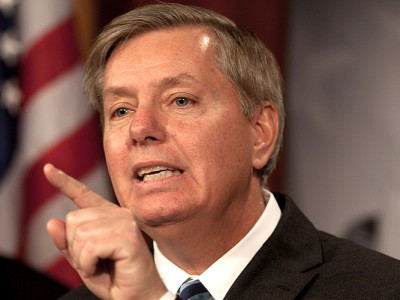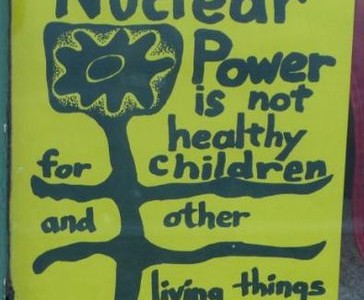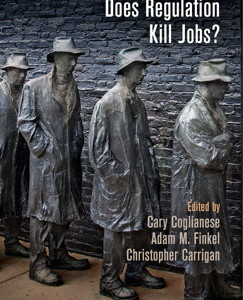Region: National
Breaking News: D.C. Circuit Dismisses Challenge to Clean Power Plan on Procedural Grounds
But More Challenges Will Follow
The D.C. Circuit Court of Appeals has dismissed the first challenge to EPA’s proposed Clean Air Act Section 111d rule to reduce greenhouse gas emissions from power plants (known as the Clean Power Plan) on the grounds that the rule is only a proposed rule, not a final one. The court’s opinion can be found …
CONTINUE READINGClean Air versus States Rights
A sleeper decision by the D.C. Circuit upholds federal air pollution authority.
The D.C. Circuit’s decision last week in Mississippi Commission on Environmental Quality v. EPA didn’t get a lot of attention, despite having a very significant constitutional ruling. Since the constitutional discussion doesn’t start until about page seventy, after many pages of scintillating discussion of matters like the reliability of private air pollution monitors and the …
Continue reading “Clean Air versus States Rights”
CONTINUE READINGLindsey Graham: Defining Environmentalism Down
Voters Elect Parties, Not Individuals
The New Republic’s breathless headline this morning announces that Senator Lindsey Graham (R-SC), who today became the one millionth Republican to announce a Presidential bid, is “A Republican That Environmentalists Can Love.” Right on cue, The Christian Science Monitor just as breathlessly called Graham “The Republican Who Wants to Tackle Climate Change.” Obviously, Graham’s people …
Continue reading “Lindsey Graham: Defining Environmentalism Down”
CONTINUE READINGJeb, the Pope and Climate Change
Maybe we need to pay more attention to the link between religion and environmentalism.
Jeb Bush’s environmental views seem to be evolving. At a recent speech at Liberty University, he had this to say about environmental protection: “America’s environmental debates, likewise, can be too coldly economical, too sterile of life . . . Christians see in nature and all God’s creatures designs grander than any of man’s own devising, the …
Continue reading “Jeb, the Pope and Climate Change”
CONTINUE READINGHail to the Chief: John Roberts and the WOTUS Rule
Roberts virtually bemoaned the lack of a rulemaking. Now he’s got what he wanted.
The government issued a long-awaited Waters of the United States rule (WOTUS for short). No doubt there will be much gnashing of teeth about the issuance of the rule — a very safe bet since the gnashers of teeth got going long before the rule was actually issued. But one person who should be happy …
Continue reading “Hail to the Chief: John Roberts and the WOTUS Rule”
CONTINUE READINGDistrust of Congress (And Why It Matters)
It’s easy to joke about Congress’s public ill-repute, but it’s a serious problem.
A recent poll shows that public approval of Congress is still in the basement (though perhaps not flat on the floor, as it was before). This graph shows the trends: But this poll on public “approval” doesn’t tell the whole story. Here’s one that asks instead whether Americans have confidence in key institutions: The configurations …
Continue reading “Distrust of Congress (And Why It Matters)”
CONTINUE READINGThe UnBushes and the Environment
Cruz, Graham, Paul, Rubio & West are all equally hostile to environmental protection.
My post last week discussed Jeb Bush’s environmental record. At this point, there’s something of a free-for-all among candidates hoping to emerge as the Bush alternative – the UnBushes. Five of the remaining candidates announced or likely candidates have served in Congress, so they have scores from the League of Conservation Voters. Some of them are considered more …
Continue reading “The UnBushes and the Environment”
CONTINUE READINGAbalones and Gulls and Judges, Oh My!
Comparing the Mono Lake Committee with the Abalone Alliance
For several months now, I have been looking for a good comparison case to the Mono Lake Committee, whose work is one of the great success stories of the modern environmental movement. Why did the Mono Lake Committee succeed when other organizations failed? Lots of organizations had good causes and dedicated leaders: what made Mono …
Continue reading “Abalones and Gulls and Judges, Oh My!”
CONTINUE READINGJobs & Regs
The empirical evidence suggests that job loss from regulation is small.
It seems to be easy to make arguments one way or another about the effect of regulation on jobs. What does the evidence say? Those seeking an answer would do well to look at a recent book on the subject by Coglianese, Finkel, and Carrigan. Although the book is broader in scope, it provides a careful …
Continue reading “Jobs & Regs”
CONTINUE READINGIs Jeb Too Green?
GOP Primary voters may think so.
At this point, the GOP Presidential field looks like Jeb Bush versus Everyone Else. (Of course, there’s a big fight over who get’s to play Everyone Else when this particular play opens in Iowa and New Hampshire.) It’s an open question whether Jeb will turn out to be too green for the average GOP primary voter. …
Continue reading “Is Jeb Too Green?”
CONTINUE READING











